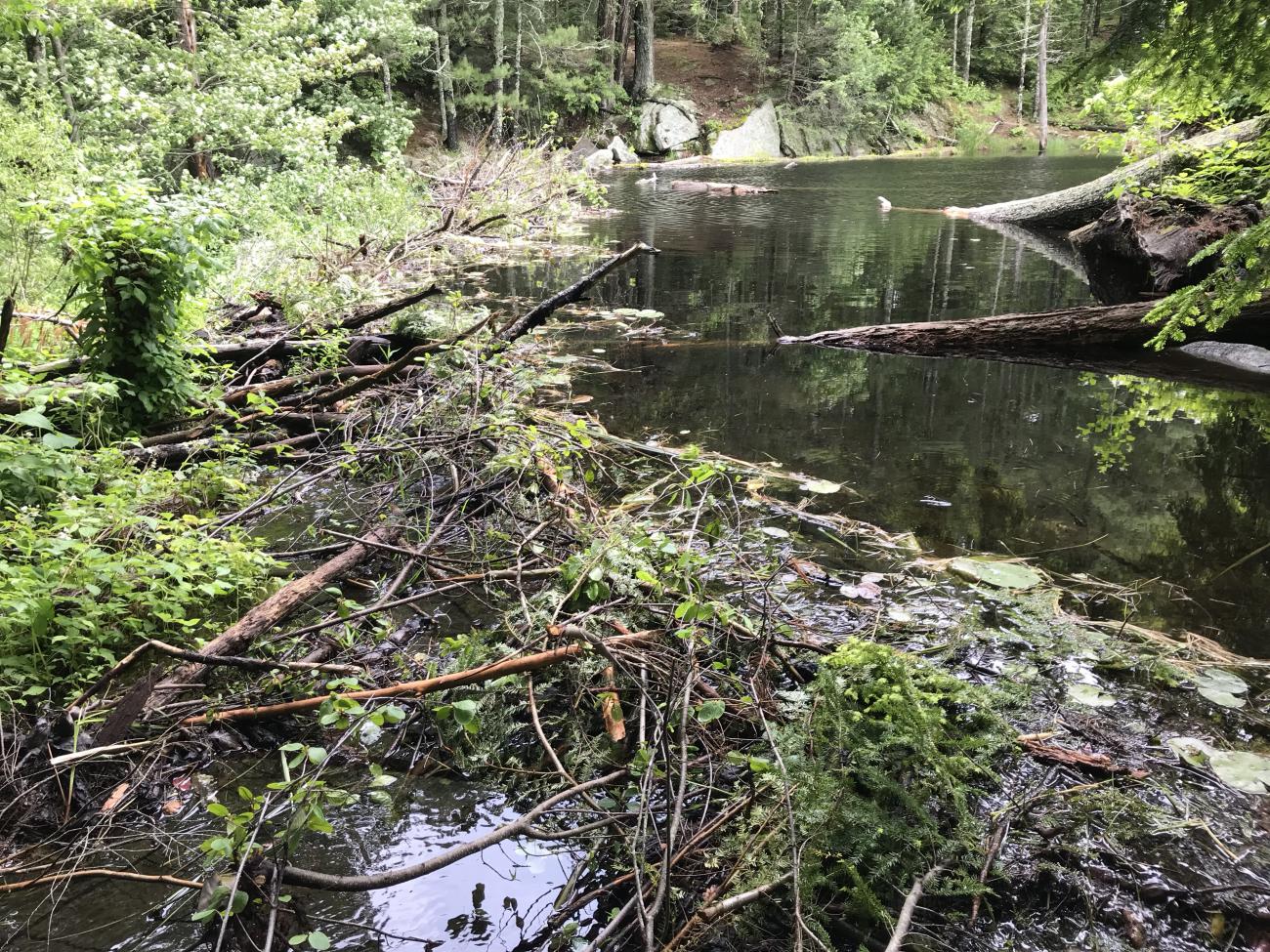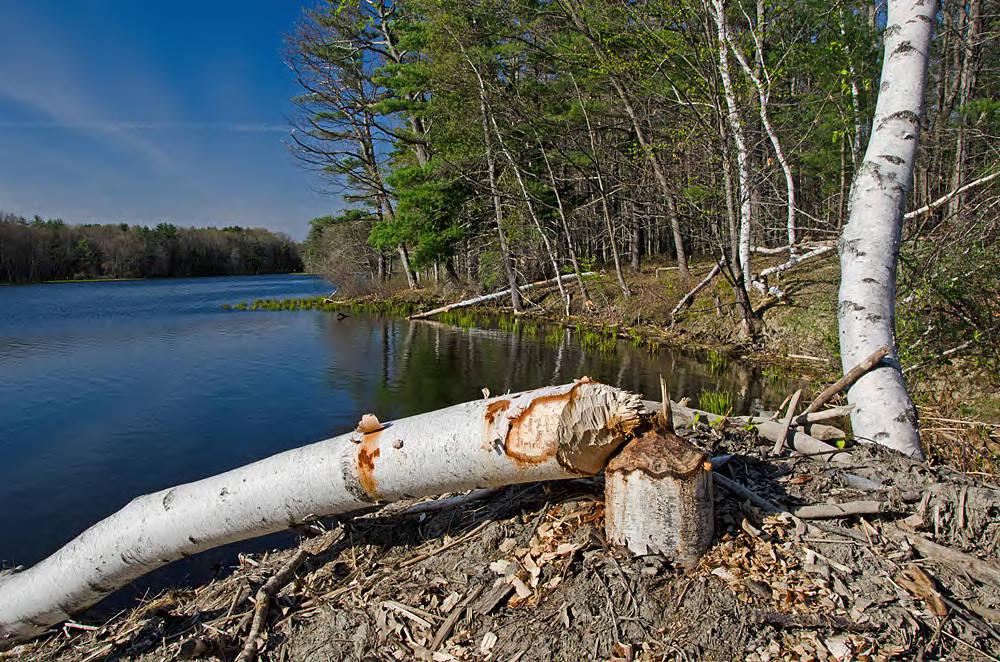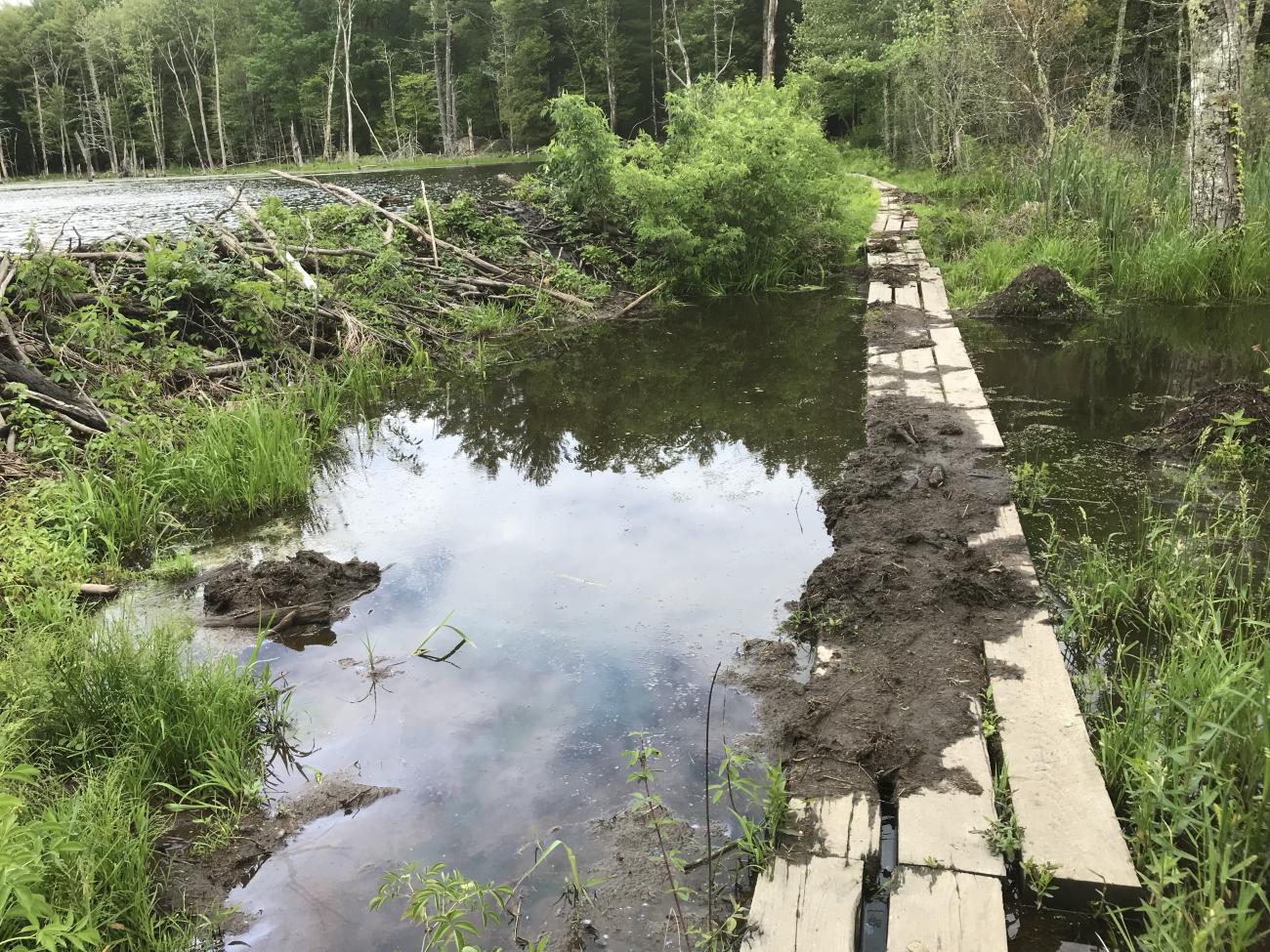Stewardship Tip: How to Know when the Beaver's Home

A foundation of the New England life, beavers have a massive influence of their environments. As ecosystem engineers, beavers are capable of drastically changing their own habitat and creating opportunities for plenty of other life to inhabit their spaces with them. But apart from seeing one, how can you tell that there's a beaver in your local pond?
The Beaver Dam

Probably the most obvious sign of beaver life is the beaver lodge or beaver dam. Beavers like to build their buoyant lodges over deep water, and if there's no water that's deep enough, they'll use the available resources to create their own dam and deep water. Patched together from logs, sticks and twigs, leaves and mud, a dam is a sure sign of beaver activity.
Girdled Trees

When beavers gnaw on trees they do so in a method called girdling. This photo shows what girdling looks like: a tree that has been gnawed all the way around in a mostly even manner. Usually, you'll be able to find a stump that has a pointed tip to it, as the beaver normally carries away the rest of the tree. When you see that the beavers are building, it is a good sign!
Scent Mounds

One of the easier marks to miss, scent mounds are piles of mud that beavers dredge up from the bottom of their waters, and then cover the mud in oil from their scent glands. These mounds serve as a way for beavers to mark their territory and let other beavers know that the pond is occupied. For a comical video of a beaver constructing one of these mounds, click here!
If you see these signs in your area, make sure to tread lightly! Beavers are important to our ecosystems. Do your best not to disturb the area, as repeated disturbances could cause the beaver to pack up and move on. Having a beaver living near your favorite trail is a real treat and with this knowledge, you can help identify their homes and make sure they want to stay!